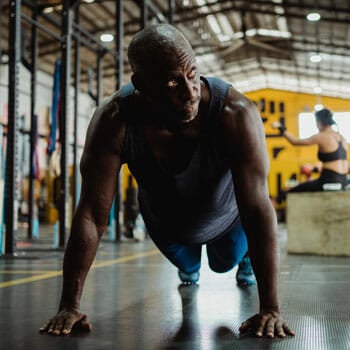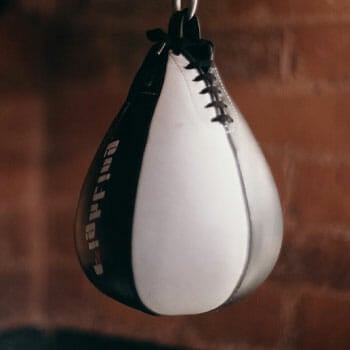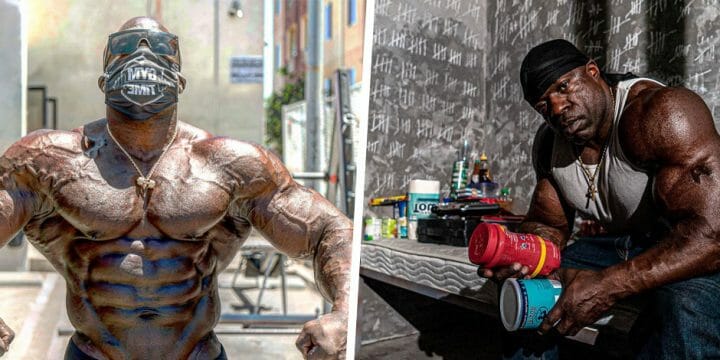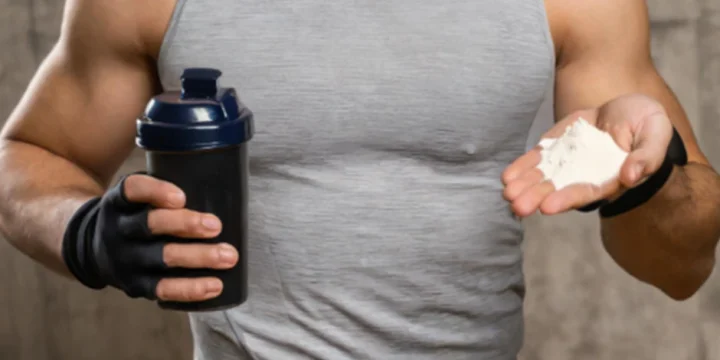In my career as an MMA champion and experienced coach, I've worked closely with boxers, always impressed by their comprehensive approach to training.
Since most gyms these days have some punching bags available, I often recommend boxing exercises to clients, sparking questions about how boxers achieve such defined physiques without heavy weightlifting.
With my background, I've created this guide to explain the effectiveness of boxing for muscle development and how to harness its full potential.
Quick Summary
Does Boxing Build Muscle?

Forget the idea that boxing's just about power punches and dodging blows.
Unlike traditional strength training, which zeroes in on muscle size and strength with specific exercises, boxing mixes aerobic and anaerobic workouts.
This duo targets both slow-twitch and fast-twitch muscle fibers, boosting muscle growth and endurance for a toned, athletic build.
So, if you plan your boxing routine smartly, you'll sculpt muscles without ever lifting weights.
Here are some of the physical benefits of boxing:
1. Muscle Building

Boxers bulk up to increase their punching power but they dodge the heavyweight muscles of bodybuilders.
Why?
More muscle means more oxygen is needed, affecting their weight class and stamina. So, they hammer away at a heavy bag, not weights.
This includes a variety of heavy bag punches—jabs, crosses, hooks, and uppercuts—working different muscles for a total body workout.
“Throwing a punch works your entire body, from your arms and shoulders all the way to your core and legs.”
-James Edwards, DPT, Physical Therapist
David Sautter, a performance expert at Write Fit, also highlights the aesthetic perks of these compound movements.
2. Fat Loss And Toning
Boxing's a two-in-one deal for muscle building and fat burning.
In my training days, I noticed similar results to a Cleveland Clinic study: boxing significantly reduces BMI, waist size, and body fat, outdoing even moderate walking for those with a BMI over 25 [1].
Continuous punches are calorie killers, chiseling down BMI and crafting a toned physique with strong muscles in the shoulders, arms, and upper back.
3. Cardio Health

Building muscle usually means extra cardio workouts.
Not with boxing. This sport's dynamism is ideal for cardio health.
Dial down punch intensity, up the frequency, and you've got a heart-revving routine. It's also joint-friendly, perfect for those with injuries or weak spots.
4. Stamina And Endurance
Building muscle often means losing stamina, but not for boxers. In my fights, I've had to juggle muscle and stamina to last through each round.
It's a unique challenge for us fighters and our coaches to become both powerful and enduring.
How Do Boxers Build Muscle Without Lifting Weights?

Boxers build muscle without lifting weights through a variety of exercise techniques that focus on full-body workouts.
So far, we’ve focused on training techniques that involve punching and footwork as a full-body exercise.
Here are a few we like the most.
1. HIIT
HIIT's not ordinary weightlifting. It's about short, fierce bursts of exercise, each lasting 30 to 40 seconds, with quick 10- to 20-second rests. In my training, this method has been key to building strength and melting fat.
Related Articles: Does Punching Abs Make Them Stronger?
2. Bodyweight Exercises

Forget isolated muscle bulking like traditional bodybuilders.
Boxers lean towards exercises like push-ups, pull-ups, and squats that hit multiple muscle groups at once for more balanced growth and better control over body size.
"The most important part of the body for strength is the glutes and legs and if you have good strength there you can’t go wrong in any sport."
-Shane McGuigan, Boxing Coach
3. Abs
Think Rocky-style training. Boxers are big on ab workouts, doing endless sit-ups to strengthen their core.
“I don’t count my sit-ups. I only start counting when it starts hurting. When I feel pain, that’s when I start counting because that’s when it really counts.”
- Muhammad Ali
It's all about withholding those gut punches.
4. Calisthenics

Calisthenics is a form of exercise that's a staple of my training. It requires little gear but it works many muscles through jumps and rhythmic movements.
A study in the Isokinetics and Exercise Science journal backs up what I've seen firsthand: participants in a calisthenics program study saw a 16.4% increase in push-up performance and a 39.2% increase in pull-ups, along with improved posture and body composition (reduction in fat mass from 14.8 to 11.4) [2].
Martial Arts Related Articles:
Types Of Boxing Exercises
In my years of training, I've learned that boxing is more than just throwing punches; it's a blend of skill development, strength building, and targeted muscle routines.
Let's zero in on the punching drills first, the cornerstone of any boxer's regimen.
You May Also Like: 12 Week Boxing Training Program PDF
1. Heavy Bag

This isn't just an upper-body workout.
A solid punch starts with correct leg placement, engaging your legs for a firm base.
Then, the hips and core activate, followed by the shoulder muscles for the actual punch. It's a key part of training, where boxers spend heaps of time.
Remember, always wear hand wraps under boxing gloves for wrist protection.
2. Speed Bag

Ideal for arm and shoulder strength plus intense cardio. The bag hangs at forehead height, bouncing back with each hit.
Timing, focus, and stamina are crucial here, enhancing hand-eye coordination and the habit of keeping hands raised.
3. Shadow Boxing

More about honing technique than muscle building. It improves coordination, punching skills, and footwork.
Varying punch types and combinations can turn it into a decent cardio session.
4. Sparring

Sparring is real-world practice—exchanging punches with a partner.
According to Harvard Health, 30 minutes of sparring burns 335 calories in a person weighing 70kg [3].
Safety gear's a must.
Focus on technique, not winning.
Remember, it's about technique, not victory.
Martial Arts Related Articles:
FAQs
Can You Get Ripped From Boxing?
Yes, you can get ripped from boxing, and that’s exactly what boxers do. They mainly avoid traditional methods to build muscles like lifting weights and focus on complex compound movements that involve the entire body.
Does Boxing Give You Big Arms?
Yes, boxing will give you big arms as the work you do on punching bags and in sparring is an effective form of resistance exercise. However, it will only allow you to gain so much muscle mass before you need to resort to other methods.
Should Boxers Lift Heavy Weights?
No, boxers shouldn’t be lifting weights as it can cause them to gain too much mass and body weight. Even a heavy-weight boxer cannot afford to build up too much muscle as it’s more difficult to keep it going for longer periods of time.
Does Shadow Boxing Build Abs?
Yes, shadow boxing can help build abs, but you won’t be able to rely on it 100%. To build muscles and overall core strength, you’ll need to do some ab workout routines on a regular basis.
References:
- https://health.clevelandclinic.org/benefits-of-boxing/
- https://www.researchgate.net/publication/317321468_The_effects_of_a_calisthenics_training_intervention_on_posture_strength_and_body_composition
- https://www.health.harvard.edu/diet-and-weight-loss/calories-burned-in-30-minutes-for-people-of-three-different-weights
About The Author
You May Also Like






